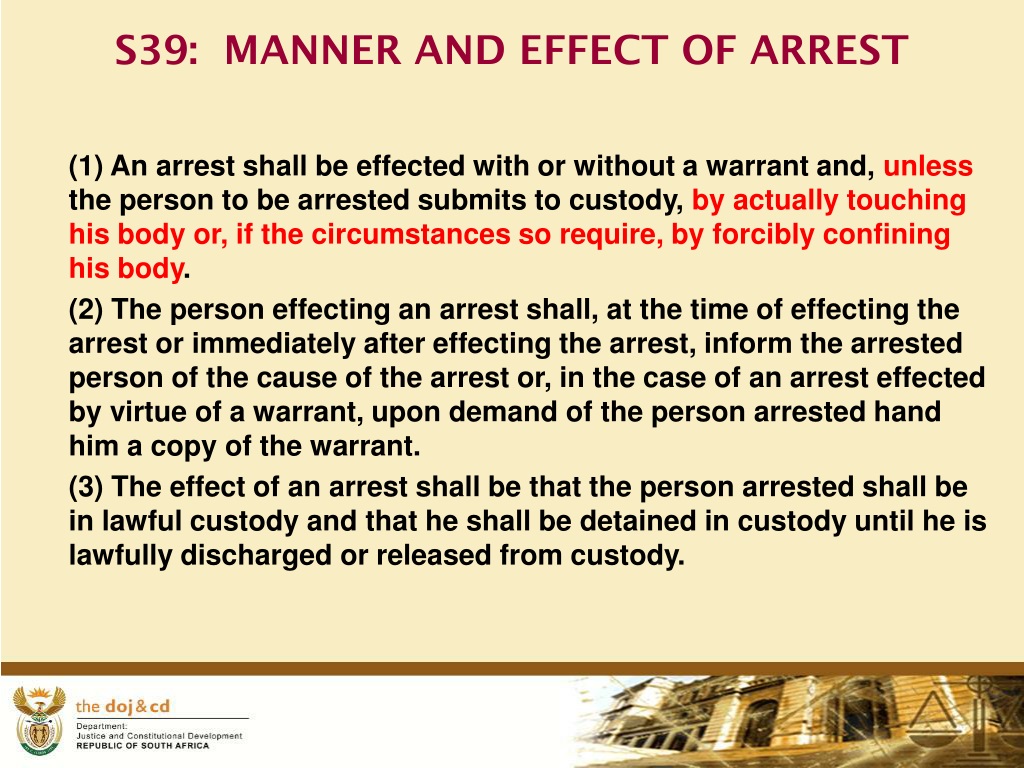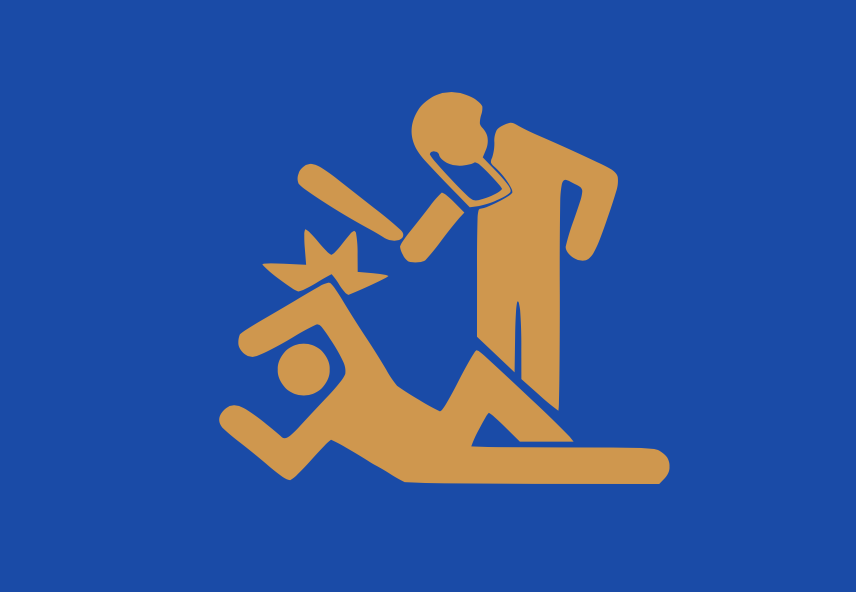Effecting An Arrest - Many states and police departments add procedures in criminal cases. Beginning with an introduction to the significance of lawful arrests, the paper delves into the legal foundations underpinning arrest procedures, emphasizing the fourth amendment’s role in protecting. Web before effecting an arrest, law enforcement typically needs to obtain a warrant from a neutral and detached magistrate, demonstrating probable cause. Therefore, if someone acting under legal authority restrains your freedom of action, they have likely arrested you. If an arrestee is actively resisting an officer, the officer may take reasonable measures to control the subject and take him or her into custody. Web so, police must follow several procedures before they can make a legal arrest. Web this article explores the critical process of conducting a lawful arrest within the framework of the united states criminal justice process. Web typically, it involves a police officer restraining someone such that a reasonable person would believe they were not free to leave, given the circumstances. These limits are enshrined in criminal procedure to protect our fourth amendment rights. Generally, there are three ways law enforcement can legally arrest a person.
Web before effecting an arrest, law enforcement typically needs to obtain a warrant from a neutral and detached magistrate, demonstrating probable cause. Web so, police must follow several procedures before they can make a legal arrest. Generally, there are three ways law enforcement can legally arrest a person. Web this article explores the critical process of conducting a lawful arrest within the framework of the united states criminal justice process. An active resister is an arrestee who exhibits resistive behavior to avoid physical control by a law enforcement officer. Therefore, if someone acting under legal authority restrains your freedom of action, they have likely arrested you. This process ensures an additional layer of scrutiny, acting as a check against unjustified arrests and affirming the commitment to a legal and accountable criminal justice system. If an arrestee is actively resisting an officer, the officer may take reasonable measures to control the subject and take him or her into custody. Criminal law is limited by constitutional rights interpreted by the supreme court. These limits are enshrined in criminal procedure to protect our fourth amendment rights.
This process ensures an additional layer of scrutiny, acting as a check against unjustified arrests and affirming the commitment to a legal and accountable criminal justice system. Many states and police departments add procedures in criminal cases. Beginning with an introduction to the significance of lawful arrests, the paper delves into the legal foundations underpinning arrest procedures, emphasizing the fourth amendment’s role in protecting. If an arrestee is actively resisting an officer, the officer may take reasonable measures to control the subject and take him or her into custody. An active resister is an arrestee who exhibits resistive behavior to avoid physical control by a law enforcement officer. Web before effecting an arrest, law enforcement typically needs to obtain a warrant from a neutral and detached magistrate, demonstrating probable cause. Web typically, it involves a police officer restraining someone such that a reasonable person would believe they were not free to leave, given the circumstances. Criminal law is limited by constitutional rights interpreted by the supreme court. These limits are enshrined in criminal procedure to protect our fourth amendment rights. Web so, police must follow several procedures before they can make a legal arrest.
Reality of the Job • The Havok Journal
Web so, police must follow several procedures before they can make a legal arrest. An active resister is an arrestee who exhibits resistive behavior to avoid physical control by a law enforcement officer. Web typically, it involves a police officer restraining someone such that a reasonable person would believe they were not free to leave, given the circumstances. This process.
(PDF) The Use of Force in Effecting Arrest in South Africa And the 2010
This process ensures an additional layer of scrutiny, acting as a check against unjustified arrests and affirming the commitment to a legal and accountable criminal justice system. Therefore, if someone acting under legal authority restrains your freedom of action, they have likely arrested you. Web typically, it involves a police officer restraining someone such that a reasonable person would believe.
Security officer approaches an armed criminal with caution Stock
Generally, there are three ways law enforcement can legally arrest a person. Web typically, it involves a police officer restraining someone such that a reasonable person would believe they were not free to leave, given the circumstances. Beginning with an introduction to the significance of lawful arrests, the paper delves into the legal foundations underpinning arrest procedures, emphasizing the fourth.
PPT SECTION 49 OF THE CRIMINAL PROCEDURE ACT, 1977 USE OF FORCE IN
An active resister is an arrestee who exhibits resistive behavior to avoid physical control by a law enforcement officer. If an arrestee is actively resisting an officer, the officer may take reasonable measures to control the subject and take him or her into custody. Criminal law is limited by constitutional rights interpreted by the supreme court. Beginning with an introduction.
The use of force in effecting arrest The use of force in effecting
Generally, there are three ways law enforcement can legally arrest a person. These limits are enshrined in criminal procedure to protect our fourth amendment rights. Many states and police departments add procedures in criminal cases. Web so, police must follow several procedures before they can make a legal arrest. Therefore, if someone acting under legal authority restrains your freedom of.
PPT SECTION 49 OF THE CRIMINAL PROCEDURE ACT, 1977 USE OF FORCE IN
Beginning with an introduction to the significance of lawful arrests, the paper delves into the legal foundations underpinning arrest procedures, emphasizing the fourth amendment’s role in protecting. Web typically, it involves a police officer restraining someone such that a reasonable person would believe they were not free to leave, given the circumstances. Generally, there are three ways law enforcement can.
Premature Ovarian Failure What Does It Mean Fertility Center Of Dallas
An active resister is an arrestee who exhibits resistive behavior to avoid physical control by a law enforcement officer. These limits are enshrined in criminal procedure to protect our fourth amendment rights. Web so, police must follow several procedures before they can make a legal arrest. Generally, there are three ways law enforcement can legally arrest a person. Therefore, if.
Understanding PC 243(b) and (c)(2) Battery on a Peace Officer in
Therefore, if someone acting under legal authority restrains your freedom of action, they have likely arrested you. Many states and police departments add procedures in criminal cases. This process ensures an additional layer of scrutiny, acting as a check against unjustified arrests and affirming the commitment to a legal and accountable criminal justice system. An active resister is an arrestee.
Is it lawful for police to use excessive force in effecting an arrest
Web before effecting an arrest, law enforcement typically needs to obtain a warrant from a neutral and detached magistrate, demonstrating probable cause. Many states and police departments add procedures in criminal cases. Generally, there are three ways law enforcement can legally arrest a person. Beginning with an introduction to the significance of lawful arrests, the paper delves into the legal.
Optimality in sum total damage to the system while effecting arrest of
If an arrestee is actively resisting an officer, the officer may take reasonable measures to control the subject and take him or her into custody. Web so, police must follow several procedures before they can make a legal arrest. These limits are enshrined in criminal procedure to protect our fourth amendment rights. An active resister is an arrestee who exhibits.
Web So, Police Must Follow Several Procedures Before They Can Make A Legal Arrest.
Web typically, it involves a police officer restraining someone such that a reasonable person would believe they were not free to leave, given the circumstances. Criminal law is limited by constitutional rights interpreted by the supreme court. An active resister is an arrestee who exhibits resistive behavior to avoid physical control by a law enforcement officer. If an arrestee is actively resisting an officer, the officer may take reasonable measures to control the subject and take him or her into custody.
Web This Article Explores The Critical Process Of Conducting A Lawful Arrest Within The Framework Of The United States Criminal Justice Process.
These limits are enshrined in criminal procedure to protect our fourth amendment rights. Many states and police departments add procedures in criminal cases. Web before effecting an arrest, law enforcement typically needs to obtain a warrant from a neutral and detached magistrate, demonstrating probable cause. Therefore, if someone acting under legal authority restrains your freedom of action, they have likely arrested you.
This Process Ensures An Additional Layer Of Scrutiny, Acting As A Check Against Unjustified Arrests And Affirming The Commitment To A Legal And Accountable Criminal Justice System.
Generally, there are three ways law enforcement can legally arrest a person. Beginning with an introduction to the significance of lawful arrests, the paper delves into the legal foundations underpinning arrest procedures, emphasizing the fourth amendment’s role in protecting.









